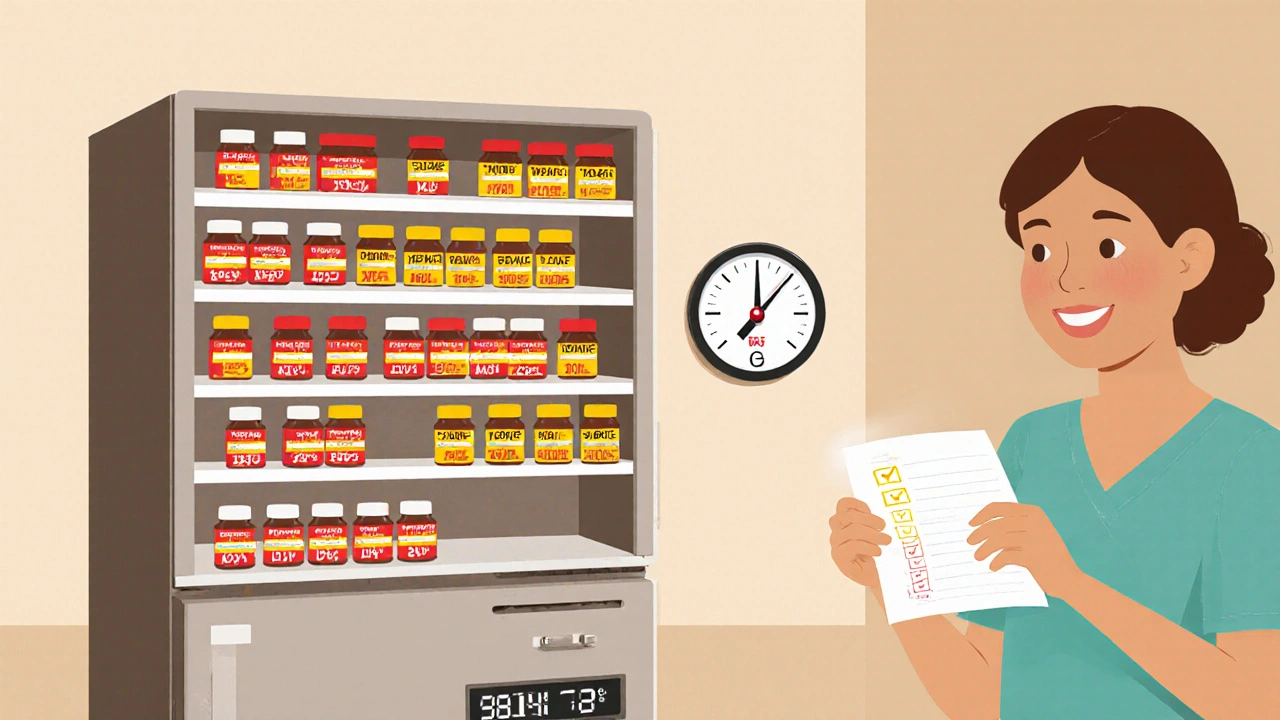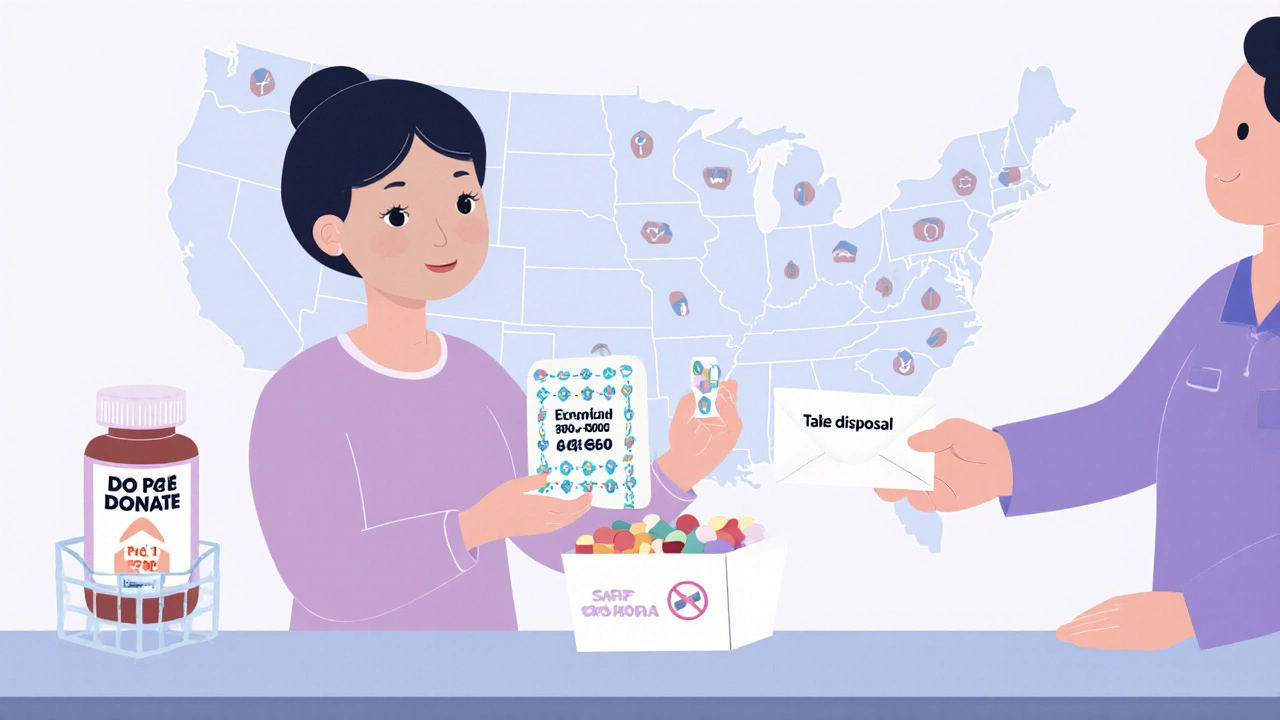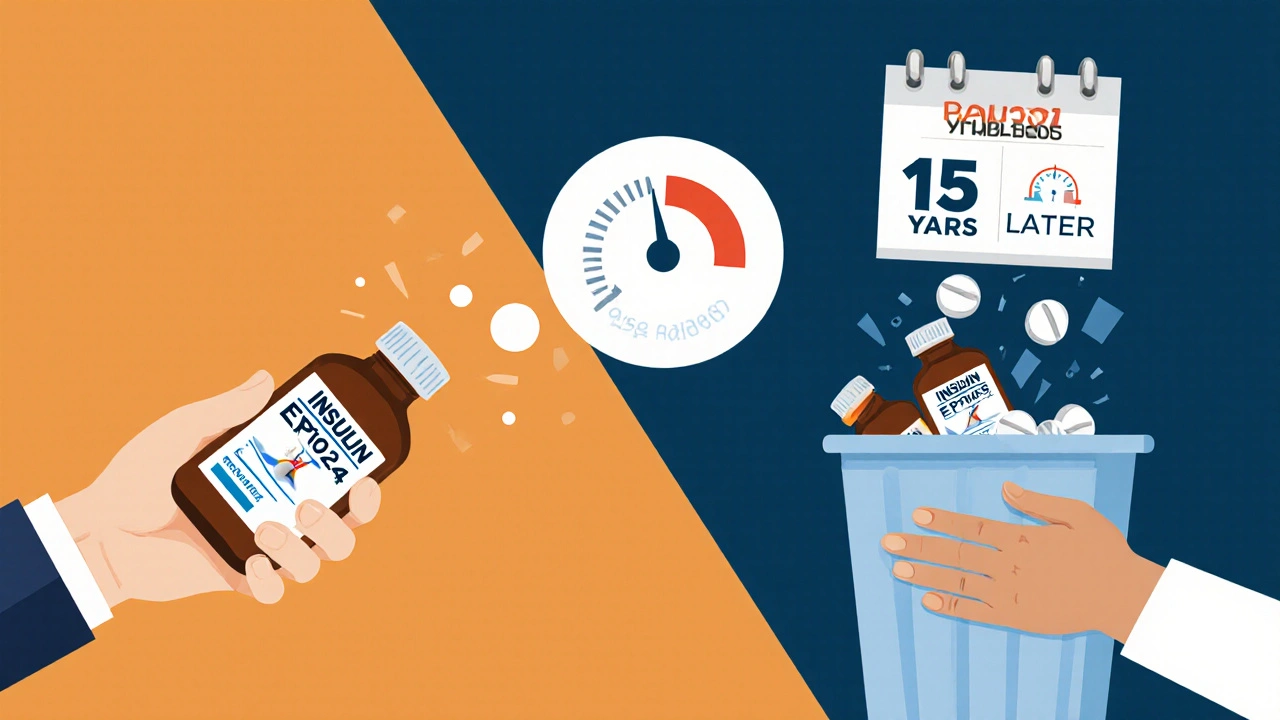How to Prevent Waste While Keeping Medications Within Date

Every year, U.S. healthcare facilities throw away billions of dollars worth of medications that haven’t expired. Not because they’re useless - but because no one checked the date, stored them wrong, or ordered too much. It’s not just money lost. It’s pills that could’ve helped someone, refrigerated biologics that spoiled in a broken fridge, and hazardous drugs ending up in landfills. The good news? You don’t need a fancy hospital system to stop this. Even small clinics, pharmacies, and households can cut waste by more than half with simple, smart habits.
Know What Expires - and What Doesn’t
Most people assume that if a pill says "expires 12/2025," it turns dangerous or useless on January 1st. That’s not true. The FDA has found that over 90% of medications remain stable and effective well past their printed expiration dates - sometimes for years. This doesn’t mean you should hoard old antibiotics, but it does mean you shouldn’t panic and toss out every bottle that’s a few months past the label. The real danger isn’t expired drugs. It’s wasted drugs. Think about it: if a patient gets a 30-day supply of a chronic medication but only takes half because their condition improved, the rest often gets thrown away. Same with antibiotics - if someone feels better after five days, they toss the rest. That’s preventable waste. Dr. Sarah Thompson from Mayo Clinic says the biggest win comes from matching dose size to actual need. Instead of giving someone a 90-day supply of a new blood pressure pill, start with a 14-day trial. If it works, refill. If not, you didn’t waste 76 pills.Store Medications Right - Temperature Matters
Insulin, vaccines, some antibiotics, and biologics need to stay cold. If they’re kept at room temperature for too long, they break down - even if they’re still within the expiration date. The same goes for heat-sensitive drugs in a bathroom cabinet or a car glovebox in summer. The rule is simple:- Refrigerated meds: 36-46°F (2-8°C). Use a standalone fridge, not the one in your kitchen. Keep a digital thermometer inside and check it daily.
- Room temperature meds: 68-77°F (20-25°C). Avoid humidity. Don’t store in bathrooms or near stoves.
- Never freeze unless the label says to.
Use FIFO - First In, First Out
This isn’t just for grocery stores. It’s critical in pharmacies and clinics too. Every time you get a new shipment of medication, move the older stock to the front. Put the new stuff in the back. It sounds basic, but 60% of expired medication waste happens because the oldest pills got buried. Set up a simple system:- When unpacking, check expiration dates on every bottle.
- Arrange them by date - earliest on top or front.
- Use color-coded labels: red for 30 days or less until expiry, yellow for 31-60 days.
Use Smaller Packs and Split Fills
Why give someone a 90-day supply of a new medication if they might not need it? Many insurers and pharmacies now offer “split fills” - you get 14 or 30 days at a time. If the patient responds well, they refill. If not, you didn’t waste the rest. This works especially well for:- New antidepressants or anxiety meds
- Weight loss drugs
- Pain medications with high abuse potential
- Medications with serious side effects

Track with Simple Tools - Even Without Tech
You don’t need Epic or Omnicell to track expiration dates. A $15 spreadsheet or even a printed checklist works. Create a weekly log:- Medication name
- Batch number
- Expiration date
- Quantity on hand
- Next review date
- Use it up in treatments
- Donate it if allowed (see below)
- Arrange proper disposal
Know the Safe Disposal Rules
Never flush pills down the toilet unless they’re on the FDA’s flush list - which includes only 15 high-risk opioids like fentanyl patches and oxycodone. For everything else, use a take-back program. As of 2023, there are over 11,200 authorized collection sites across the U.S. - at pharmacies, hospitals, and police stations. The EPA says this is the only safe way to dispose of hazardous drugs. If you’re a patient:- Check DEA’s Take-Back Locator (or ask your pharmacist)
- Keep meds in original containers
- Remove personal info but don’t destroy the label
- Partner with a certified disposal vendor
- Never mix meds with trash or recycling
- Document disposal logs - required by law for hazardous waste generators
Donate What You Can
In 37 states, you can legally donate unused, unopened medications to nonprofit programs. These go to low-income patients who can’t afford prescriptions. Requirements:- Original packaging, unopened, no signs of tampering
- Expires at least 90 days in the future
- Not controlled substances (like opioids or stimulants)

Train Your Team - It’s the #1 Factor
The WHO says staff training is the most important step in reducing waste. Facilities with formal training programs see 28% less waste than those without. Simple training checklist:- How to read expiration dates correctly
- Storage requirements for each drug type
- How to use FIFO
- When to split fills
- How to use disposal sites
Start Small. Save Big.
You don’t need to overhaul your system tomorrow. Pick one thing:- Start using color-coded labels for expiring meds
- Switch to 14-day split fills for new prescriptions
- Put a thermometer in the fridge and check it every morning
- Find your nearest take-back drop-off
What About AI and High-Tech Systems?
Yes, tools like Epic’s Pharmacist Dashboard or Omnicell’s XT Series can automate alerts, predict usage, and cut waste by 25% or more. But they cost $8,000-$15,000 a year. For small clinics, that’s not realistic. The truth? Most waste happens because of simple human errors - not broken software. The same clinics that use free spreadsheets and color labels save just as much as those spending big on tech. Focus on habits first. Technology comes later.Final Thought: Expired Isn’t Always Useless
Dr. Lisa Chen from JAMA reminds us that we’re throwing away perfectly good medicine because we’re obsessed with dates - not data. Many drugs stay potent for years after expiration. The FDA’s Shelf Life Extension Program found 88% of stockpiled military drugs were still effective 15 years past their label. That doesn’t mean you should use 10-year-old insulin. But it does mean: before you toss a bottle, ask - is this really expired? Or just labeled as such? Sometimes, the most powerful tool isn’t a scanner or a fridge. It’s a pause. A question. A second look.Can I still use medication after the expiration date?
Many medications remain safe and effective well past their printed expiration date - sometimes for years. The FDA’s Shelf Life Extension Program found over 88% of stockpiled drugs were still potent 15 years later. However, this doesn’t apply to all drugs. Insulin, liquid antibiotics, nitroglycerin, and biologics degrade quickly and should never be used past their date. When in doubt, consult a pharmacist. Never use pills that are discolored, cracked, or smell odd.
How do I safely dispose of expired medications?
The safest way is through a take-back program. There are over 11,200 authorized collection sites across the U.S., including pharmacies, hospitals, and police stations. Never flush pills unless they’re on the FDA’s flush list (only 15 high-risk opioids). Don’t throw them in the trash - they can leak into water systems. Remove your name from the label, but keep the drug name visible for proper disposal.
Can I donate unused medications?
Yes - in 37 U.S. states, you can legally donate unopened, non-controlled medications to nonprofit programs that help low-income patients. Requirements: original packaging, expiration date at least 90 days away, no signs of damage. Controlled substances like opioids, stimulants, or sedatives cannot be donated. Check with your state health department or local pharmacy for approved programs.
What’s the best way to store medications at home?
Keep most pills in a cool, dry place - not the bathroom or near the stove. Refrigerated meds (like insulin or some antibiotics) need to stay between 36-46°F (2-8°C). Use a standalone fridge, not your kitchen one. Always check the label. Avoid humidity and direct sunlight. A simple digital thermometer in the fridge costs less than $20 and can prevent costly spoilage.
How can I reduce waste in a small clinic without expensive software?
Start with three free steps: 1) Use FIFO - always put older stock in front. 2) Use color-coded labels (red = expiring in 30 days). 3) Do a weekly 10-minute audit every Friday. Track expirations on a simple sheet. Split prescriptions into 14-day fills when possible. Train staff for 15 minutes each quarter. These steps cut waste by 20-30% in clinics with no tech investment.
Why do so many medications get wasted in clinics?
The top reasons: ordering too much, poor storage (like keeping insulin on a counter), not using FIFO, and not tracking expiration dates. Many clinics get bulk shipments and bury older bottles. Patients also stop taking meds early and toss the rest. A 2022 CDC survey found 62% of independent clinics don’t have a formal waste prevention plan - and that’s where most waste happens.
Does donating expired meds help anyone?
No - and it’s illegal. Donation programs only accept medications that expire at least 90 days in the future. Expired drugs are not safe to use, even if they look fine. Donating expired meds puts patients at risk and can get your clinic in legal trouble. Always check the expiration date before donating. If it’s expired, dispose of it properly through a take-back program.

Destiny Annamaria
November 19, 2025 AT 09:14OMG YES this is so real. I had a cousin who tossed a whole box of metformin because it was 'expired' - turns out it was still good for 3 more years. We're so obsessed with dates we forget to use our brains. 🙃
Jeremy Samuel
November 20, 2025 AT 05:42lol the whole '90% still good after expiry' thing is just FDA propaganda. I mean, have you SEEN the quality control in some of these factories? My aunt took a 5-year-old ibuprofen and got hives. So no, i'm not trustin' no labels.
Alyssa Torres
November 21, 2025 AT 06:21This hit me right in the soul. I used to work in a rural pharmacy and we'd have people come in crying because they couldn't afford their meds… while the back shelf had 20 unopened bottles of insulin that expired 3 months ago. We didn't have a fridge alarm. No color codes. Just guilt. This post? It’s a blueprint. Start with one thing. Do it right. Then do another. That’s how change happens.
Nicole Ziegler
November 21, 2025 AT 22:51fridge thermometer = $20
saved insulin = $12k
your move, healthcare industrial complex 😅
Ravi boy
November 22, 2025 AT 23:21in india we just keep pills in dry place and use em till they look weird or taste funny. no fancy thermometers. no labels. just common sense. why make it hard?
Dana Oralkhan
November 23, 2025 AT 22:12I love how this doesn’t require fancy tech. Just people paying attention. My grandma used to say, 'If you don’t look, you won’t see.' That’s all this is. A reminder to look. And maybe, just maybe, to care a little more.
Shiv Karan Singh
November 25, 2025 AT 22:03donating meds? lol sure. next they'll say you can donate used needles too. this is just a gateway to government-controlled medicine redistribution. you think they won't track who gets what? watch.
Ron and Gill Day
November 26, 2025 AT 12:52Let’s be honest: this whole post is just a feel-good listicle for people who think 'FIFO' is a new yoga pose. Real healthcare waste comes from corporate greed, insurance red tape, and $1000 insulin vials that pharmacies mark up 400%. Stop pretending a $15 spreadsheet fixes systemic collapse.
Aruna Urban Planner
November 27, 2025 AT 14:36The structural inefficiencies in pharmaceutical logistics are non-trivial. The entropy of inventory management in decentralized clinical settings is exacerbated by cognitive load on frontline staff. A systems-thinking approach-anchored in behavioral nudges like color-coded labeling and temporal prioritization-can yield significant reductions in pharmacological obsolescence without capital investment.
Bharat Alasandi
November 29, 2025 AT 00:50bro in india we dont even have fridges for insulin. we use coolers with ice packs. and we use em up fast. no waste. maybe we need less tech and more practicality. also, split fills? we do that by default. 7 days at a time. done.
Summer Joy
November 29, 2025 AT 18:42OK but what if the fridge alarm goes off and NO ONE CARES?? 😭
What if the person who's supposed to check the list is on vacation??
What if the clinic runs out of red labels??
THIS IS ALL JUST A GLORIFIED TO-DO LIST FOR OVERWORKED NURSES WHO AREN'T EVEN PAID TO DO THIS. 😤
Matthew Karrs
November 29, 2025 AT 22:3490% still effective? sure. and the FDA also says sugar is safe in moderation. this is all a cover-up. They don't want you to know the real shelf life is 20+ years. They're hoarding it for the next pandemic. Or the next war. Or the next 'emergency'.
Kristi Bennardo
November 30, 2025 AT 11:44While the proposed methodologies are superficially pragmatic, they fundamentally neglect the regulatory and liability frameworks governing pharmaceutical stewardship. To suggest that expired pharmaceuticals may be retained for use absent formal stability testing constitutes a breach of the Federal Food, Drug, and Cosmetic Act. This post, while well-intentioned, dangerously undermines public health infrastructure.